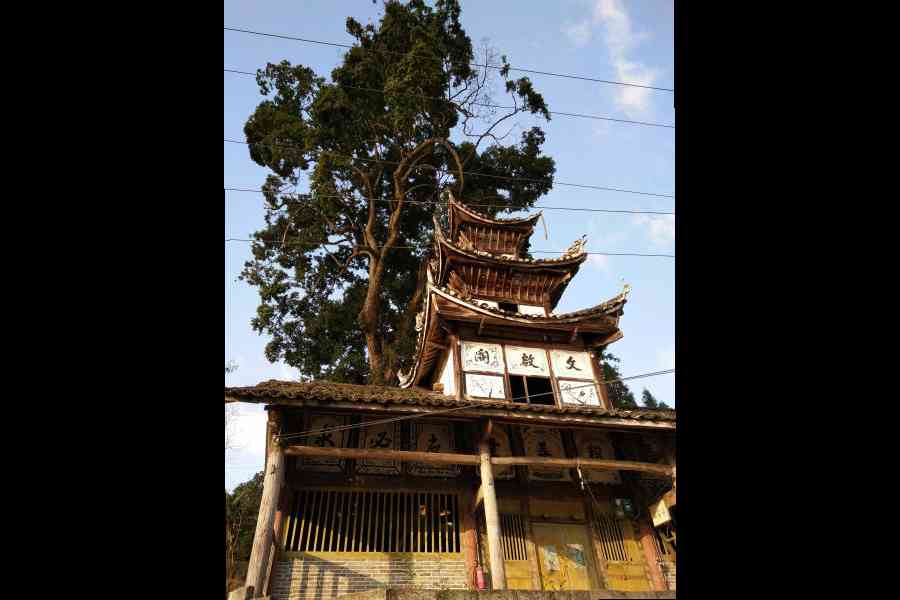The Putuo hornbeam, a hardy tree that thrives in the damp air by the East China Sea, could be easily overlooked by visitors to the Huiji Temple on an island in the Zhejiang province in China.
The tree has an unremarkable appearance: spotty bark, small stature and serrated leaves with veins as neatly spaced as notebook lines. But its status is singular. As far as conservationists can tell, no other mature specimen of its species is alive in the wild.
The holdout on the island Mount Putuo has been there for about two centuries. And according to a study published in Current Biology, its setting may have been its salvation.
The study found that religious sites in eastern China have become refuges for ancient and endangered trees. Since the early years of the Common Era, Buddhist and Taoist temples have sheltered plants that otherwise struggled to find a foothold, including at least eight species that now exist nowhere else on Earth.
“This form of biodiversity conservation, rooted in cultural and traditional practices, has proven to be remarkably resilient, persisting even in the face of modern civilisation and rapid economic development,” said Zhiyao Tang, a professor of ecology at Peking University in China and one of the study’s authors.
The trees survived at religious sites in part because they were planted and cultivated there. The report noted that Buddhism and Taoism emphasise spiritual association with plants, and the temples tended to be left undisturbed, shielding the areas from deforestation.
David Lindenmayer, another study author who is a conservation biologist at the Australian National University in Canberra, said, “It’s an interesting intersection of conservation science and religion.”
The study used government data and past surveys to log almost 47,000 old trees scattered across 6,545 religious sites in China, most of which were Buddhist temples. Of those old trees — defined by researchers as lasting a century or more — nearly 6,000 belonged to threatened species.
Many of the trees were much older than the lonely hornbeam on Mount Putuo. Two Phoebe zhennan trees at Daming Temple, in Sichuan province, appeared to be about 1,500 years old. And many Ginkgo biloba plants appeared to have taken root around the time that Buddhism, which originated in India, began to spread across China about 2,000 years ago.
The oldest tree documented in the study was traced back to the Eastern Han dynasty and the establishment of the Baima, also known as White Horse, temple in Luoyang in the year 68.
Trees have long been associated with Buddhist traditions. It was under a fig tree that the Buddha was said to have first attained enlightenment in Bihar, India. And according to the study, temples in China would often favour particular plants like the Ginkgo biloba, the Buddhist pine or the Japanese tree lilac.
But the link between sacred sites and arboreal preservation is not limited to China, or to Buddhism. Past research has shown that religious places and practices have preserved trees and forests around the world, from Africa to Europe to the Americas.
In that context, the report was interesting but not surprising, said Malin Rivers, who runs conservation prioritisation at the Botanic Gardens Conservation International in England and was not involved in the research.
“It’s still only a very small number of individual trees that are being conserved in this way,” she said.
Last year, the International Union for Conservation of Nature’s Red List of Threatened Species, which Rivers worked on, found that more than a third of the world’s tree species were threatened with extinction.
NYTNS











